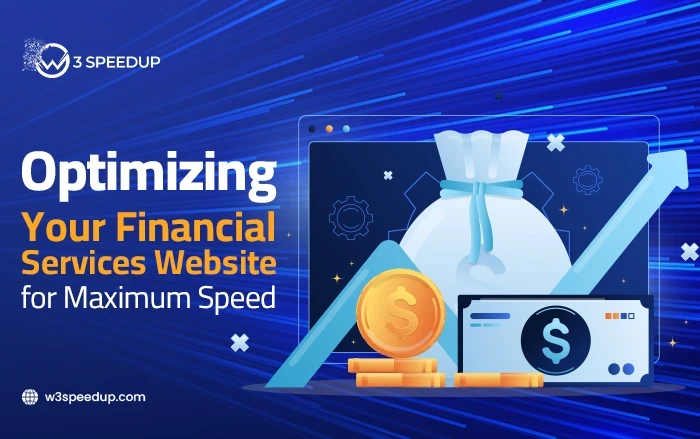Every website owner knows that website speed is not just a convenience but a necessity. A swift website enhances user experience and significantly contributes to customer satisfaction and retention. Your financial services website should be well-optimized, so that you can cater to all the needs of your customers without a hassle.
If you feel stuck or have tried everything, nothing seems to work out, there is no need to worry. This article explores actionable strategies for optimizing your financial services website for maximum speed, ensuring your platform remains competitive and efficient.
Understanding the Impact of Speed
Speed impacts financial services websites in multiple ways. First, it affects user engagement. No one would want to engage with a website that takes a lot of time to load. But for sites that take about two seconds to load leads to customer satisfaction.
Secondly, website speed improves SEO ranking. Search engines like Google prioritize faster websites in their ranking. If your website is slow, it will lose traffic and this means that it will not be discoverable by Google’s ranking algorithm.
Key Strategies for Speed Optimization
 Efficient Use of Web Hosting
Efficient Use of Web Hosting
Choosing an excellent web hosting service is crucial. best accounting apps, especially those that hold sensitive data, dedicated servers, or cloud hosting servers are good options. This offers efficient security to protect your website from cyber threats. Most importantly, they offer superior speed relative to shared hosting.
 Enabling Compression and Caching
Enabling Compression and Caching
There are software applications that can help you compress data on your website. For instance, Gzip can reduce the size of your website’s data, enhancing speed. Furthermore, setting up cache rules helps the browser store resources on local computers, thus reducing loading time whenever someone visits your website.
 Optimizing Images and Videos
Optimizing Images and Videos
Images and videos are among the largest files on a website. Resizing and cropping images are a good way to ensure that your website is fast. You can use different image formats WebP for images and H.265 for videos. Also consider lazy loading images and videos, where you can only download images that are visible in the viewport (visible part of the web page).
 Minimizing HTTP Request
Minimizing HTTP Request
Most of the web page’s load time is spent downloading images, videos, scripts, and stylesheets. You can decrease the number of elements on your page to decrease the number of HTTP requests required to load a page. You can combine several images into one using a software system, or utilize streamlined scripts.
 Using Modern Technology
Using Modern Technology
Nowadays, technology has made everything possible, and maximizing website speed is not an exception. HTML5 and CSS3 provide functionalities that were previously possible only through scripts such as Java scripts. Utilizing these technologies reduces the number of files the server needs to fetch and helps in rendering the page faster.
 Implementing a Content Delivery Network (CDN)
Implementing a Content Delivery Network (CDN)
A CDN stores copies of your website in different, geographically diverse data centers so that they can be accessible from anywhere around the globe. This is particularly beneficial for financial companies serving customers worldwide.
Regular Monitoring and Testing
It is advisable to regularly monitor and test the performance of your website. PageSpeed Insights and GTMetrix are tools that can provide valuable insights into how your websites performs and identify areas of improvement.
Final Word
Optimizing your financial services website for maximum speed is not as hard as it seems. With the right strategies, you can ensure that your website not only meets but exceeds the expectations of your customers, by providing a seamless and efficient online experience. This, in turn, fosters loyalty and trust, driving the overall success of your financial enterprise.



